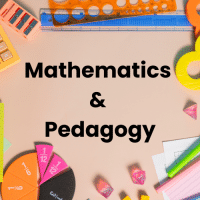CTET & State TET Exam > CTET & State TET Questions > Direction: Answer the following questions by ...
Start Learning for Free
Direction: Answer the following questions by selecting the correct / most appropriate options.
Statement A): The male honey bee flies around flowers in search of nectar.
Statement B): Honey bees lay their eggs from October to December.
Statement A): The male honey bee flies around flowers in search of nectar.
Statement B): Honey bees lay their eggs from October to December.
- a)Both A) and B) are true and B) is the correct explanation of A)
- b)Both A) and B) are true, but B) is not the correct explanation of A)
- c)A) is true, but B) is false
- d)A) is false, but B) is true
Correct answer is option 'D'. Can you explain this answer?
Most Upvoted Answer
Direction: Answer the following questions by selecting the correct / m...
- A honey bee is a flying insect well known for its ability to produce honey by collecting nectar from flowers.
- Hence the name honey bee.
About Honey bees:
- Honeybees are attracted to flowers.
- Honey bees live in a beehive, which is commonly used to describe the nest of any bee colony.
- Honeybees lay their eggs from October to December.
- Honey bees like to feed on sugar syrup.
- Every bee colony consists of three types of bees:
- Queen Bee: Every beehive has one Queen Bee that lays eggs.
- Male Bee: There are only a few males in the hive. The male bees have no special role as workers.
- Worker Bee: Most of the bees in the hive are worker-bees. These bees work all day. They make the hive and also look after the baby bees. They fly around flowers in search of nectar. The worker bees are very important for the hive. Without worker-bees, there would be neither hive nor any nectar collection.
- When one bee finds flowers with nectar, it does a special kind of dance by which the other bees can know where the nectar is.
- Honey bees play a very important role in the pollination of flowers like the Litchi, coffee, and cocoa flower.
Thus,
Statement A): The male honey bee flies around flowers in search of nectar: Incorrect
Statement B): Honey bees lay their eggs from October to December: Correct
Hence, A) is false, but B) is true.
Statement A): The male honey bee flies around flowers in search of nectar: Incorrect
Statement B): Honey bees lay their eggs from October to December: Correct
Hence, A) is false, but B) is true.
Attention CTET & State TET Students!
To make sure you are not studying endlessly, EduRev has designed CTET & State TET study material, with Structured Courses, Videos, & Test Series. Plus get personalized analysis, doubt solving and improvement plans to achieve a great score in CTET & State TET.

|
Explore Courses for CTET & State TET exam
|

|
Similar CTET & State TET Doubts
Direction: Answer the following questions by selecting the correct / most appropriate options.Statement A): The male honey bee flies around flowers in search of nectar.Statement B): Honey bees lay their eggs from October to December.a)Both A) and B) are true and B) is the correct explanation of A)b)Both A) and B) are true, but B) is not the correct explanation of A)c)A) is true, but B) is falsed)A) is false, but B) is trueCorrect answer is option 'D'. Can you explain this answer?
Question Description
Direction: Answer the following questions by selecting the correct / most appropriate options.Statement A): The male honey bee flies around flowers in search of nectar.Statement B): Honey bees lay their eggs from October to December.a)Both A) and B) are true and B) is the correct explanation of A)b)Both A) and B) are true, but B) is not the correct explanation of A)c)A) is true, but B) is falsed)A) is false, but B) is trueCorrect answer is option 'D'. Can you explain this answer? for CTET & State TET 2024 is part of CTET & State TET preparation. The Question and answers have been prepared according to the CTET & State TET exam syllabus. Information about Direction: Answer the following questions by selecting the correct / most appropriate options.Statement A): The male honey bee flies around flowers in search of nectar.Statement B): Honey bees lay their eggs from October to December.a)Both A) and B) are true and B) is the correct explanation of A)b)Both A) and B) are true, but B) is not the correct explanation of A)c)A) is true, but B) is falsed)A) is false, but B) is trueCorrect answer is option 'D'. Can you explain this answer? covers all topics & solutions for CTET & State TET 2024 Exam. Find important definitions, questions, meanings, examples, exercises and tests below for Direction: Answer the following questions by selecting the correct / most appropriate options.Statement A): The male honey bee flies around flowers in search of nectar.Statement B): Honey bees lay their eggs from October to December.a)Both A) and B) are true and B) is the correct explanation of A)b)Both A) and B) are true, but B) is not the correct explanation of A)c)A) is true, but B) is falsed)A) is false, but B) is trueCorrect answer is option 'D'. Can you explain this answer?.
Direction: Answer the following questions by selecting the correct / most appropriate options.Statement A): The male honey bee flies around flowers in search of nectar.Statement B): Honey bees lay their eggs from October to December.a)Both A) and B) are true and B) is the correct explanation of A)b)Both A) and B) are true, but B) is not the correct explanation of A)c)A) is true, but B) is falsed)A) is false, but B) is trueCorrect answer is option 'D'. Can you explain this answer? for CTET & State TET 2024 is part of CTET & State TET preparation. The Question and answers have been prepared according to the CTET & State TET exam syllabus. Information about Direction: Answer the following questions by selecting the correct / most appropriate options.Statement A): The male honey bee flies around flowers in search of nectar.Statement B): Honey bees lay their eggs from October to December.a)Both A) and B) are true and B) is the correct explanation of A)b)Both A) and B) are true, but B) is not the correct explanation of A)c)A) is true, but B) is falsed)A) is false, but B) is trueCorrect answer is option 'D'. Can you explain this answer? covers all topics & solutions for CTET & State TET 2024 Exam. Find important definitions, questions, meanings, examples, exercises and tests below for Direction: Answer the following questions by selecting the correct / most appropriate options.Statement A): The male honey bee flies around flowers in search of nectar.Statement B): Honey bees lay their eggs from October to December.a)Both A) and B) are true and B) is the correct explanation of A)b)Both A) and B) are true, but B) is not the correct explanation of A)c)A) is true, but B) is falsed)A) is false, but B) is trueCorrect answer is option 'D'. Can you explain this answer?.
Solutions for Direction: Answer the following questions by selecting the correct / most appropriate options.Statement A): The male honey bee flies around flowers in search of nectar.Statement B): Honey bees lay their eggs from October to December.a)Both A) and B) are true and B) is the correct explanation of A)b)Both A) and B) are true, but B) is not the correct explanation of A)c)A) is true, but B) is falsed)A) is false, but B) is trueCorrect answer is option 'D'. Can you explain this answer? in English & in Hindi are available as part of our courses for CTET & State TET.
Download more important topics, notes, lectures and mock test series for CTET & State TET Exam by signing up for free.
Here you can find the meaning of Direction: Answer the following questions by selecting the correct / most appropriate options.Statement A): The male honey bee flies around flowers in search of nectar.Statement B): Honey bees lay their eggs from October to December.a)Both A) and B) are true and B) is the correct explanation of A)b)Both A) and B) are true, but B) is not the correct explanation of A)c)A) is true, but B) is falsed)A) is false, but B) is trueCorrect answer is option 'D'. Can you explain this answer? defined & explained in the simplest way possible. Besides giving the explanation of
Direction: Answer the following questions by selecting the correct / most appropriate options.Statement A): The male honey bee flies around flowers in search of nectar.Statement B): Honey bees lay their eggs from October to December.a)Both A) and B) are true and B) is the correct explanation of A)b)Both A) and B) are true, but B) is not the correct explanation of A)c)A) is true, but B) is falsed)A) is false, but B) is trueCorrect answer is option 'D'. Can you explain this answer?, a detailed solution for Direction: Answer the following questions by selecting the correct / most appropriate options.Statement A): The male honey bee flies around flowers in search of nectar.Statement B): Honey bees lay their eggs from October to December.a)Both A) and B) are true and B) is the correct explanation of A)b)Both A) and B) are true, but B) is not the correct explanation of A)c)A) is true, but B) is falsed)A) is false, but B) is trueCorrect answer is option 'D'. Can you explain this answer? has been provided alongside types of Direction: Answer the following questions by selecting the correct / most appropriate options.Statement A): The male honey bee flies around flowers in search of nectar.Statement B): Honey bees lay their eggs from October to December.a)Both A) and B) are true and B) is the correct explanation of A)b)Both A) and B) are true, but B) is not the correct explanation of A)c)A) is true, but B) is falsed)A) is false, but B) is trueCorrect answer is option 'D'. Can you explain this answer? theory, EduRev gives you an
ample number of questions to practice Direction: Answer the following questions by selecting the correct / most appropriate options.Statement A): The male honey bee flies around flowers in search of nectar.Statement B): Honey bees lay their eggs from October to December.a)Both A) and B) are true and B) is the correct explanation of A)b)Both A) and B) are true, but B) is not the correct explanation of A)c)A) is true, but B) is falsed)A) is false, but B) is trueCorrect answer is option 'D'. Can you explain this answer? tests, examples and also practice CTET & State TET tests.

|
Explore Courses for CTET & State TET exam
|

|
Suggested Free Tests
Signup for Free!
Signup to see your scores go up within 7 days! Learn & Practice with 1000+ FREE Notes, Videos & Tests.

























